As I write this post, it is projected to be 104° this afternoon, and it has been over 100 for what seems like a million days already. We just had our hottest May on record, and we’re halfway through a June of mostly 100° days. It’s just plain too hot, but you can still garden when it’s hot. But our plants will need more care than ever.
Take Care of Yourself First
Taking care of your plants when it’s hot is only part of the situation. Taking care of yourself is important too. Be sure to keep your water bottle at the ready. Wear a hat and sunscreen as a part of your gardening uniform.
When it’s hot, garden early in the morning, or late in the evening to make it easier on your body. Since it stays light until nearly 9:00, you can get a good hour or two in after the temperature starts to wind down, and the sun is not so hot. Remember, if you get heat stroke, your plants will be left to fend for themselves.
Enjoy the Fruits of Your Spring Labors
The middle of the summer may not be the most fun time to garden but it is a time when you can enjoy the literal fruits of your labor from the spring season. Now you can cut a bouquet of your zinnias, gladiolus, obedient plant and sunflowers to bring into your air-conditioned house.
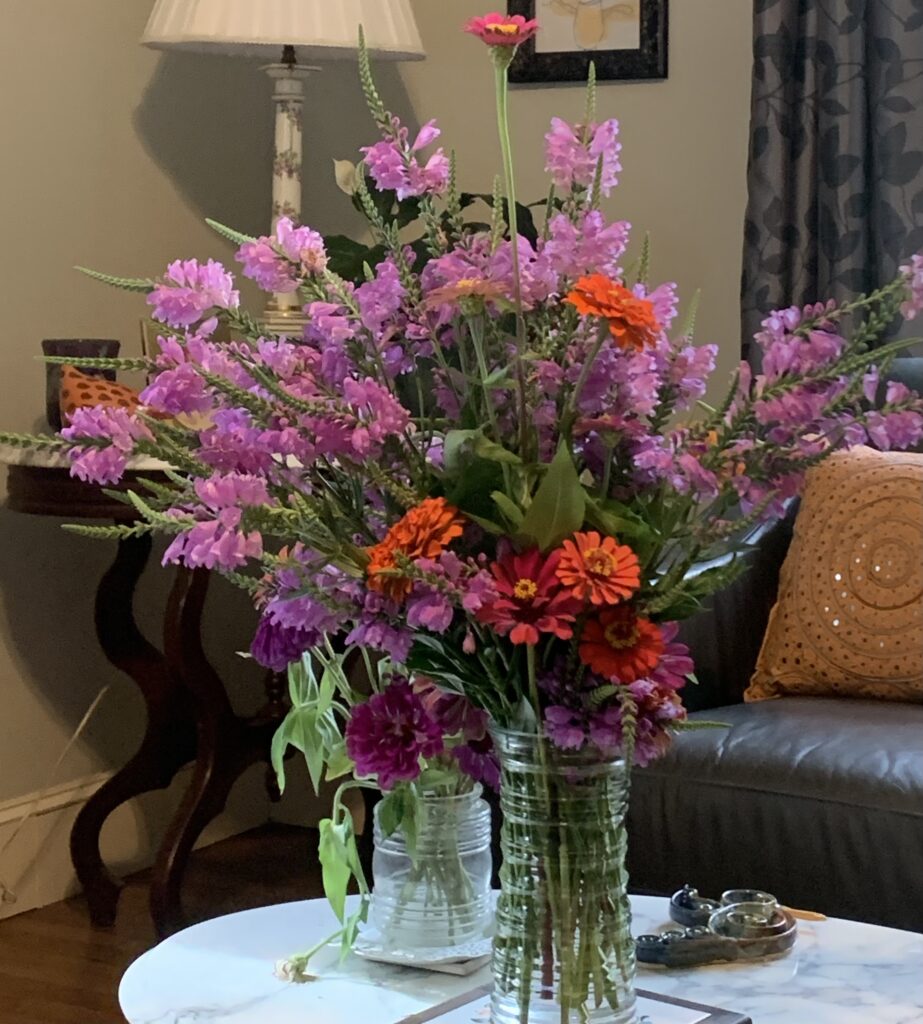
Early in June, you can bring in the last of your spring tomatoes, your onions, your beans, the first of your peppers, and maybe if you’re lucky some squash and cucumbers. Later in the summer, you may have to pull up some plants that have waned or plant new things.
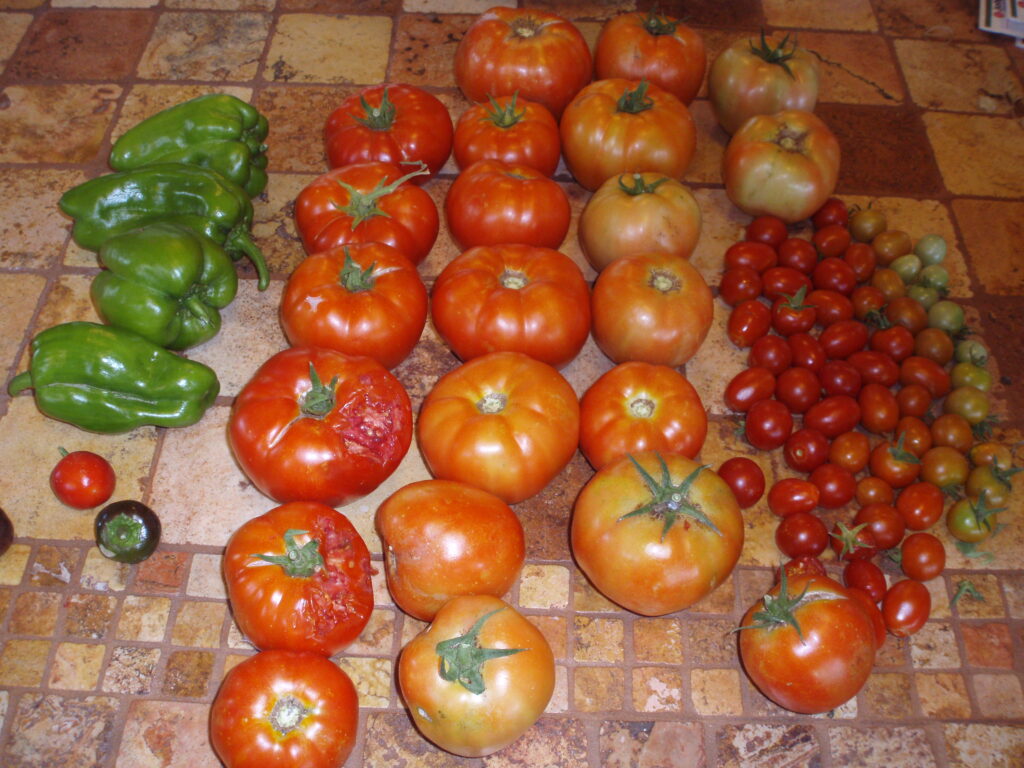
Texas’s Dormant Season
I like to think of mid to late summer (July through September or even October) as our dormant season. Up north, people have the winter as a dormant season and they tend to spend more time indoors than in the garden. In Texas, late summer when the temperatures are sure to climb into triple digits, we tend to spend more time indoors.
Plan on a lag in your garden for this time period. Plants can’t go inside and sit under a ceiling fan in an air-conditioned room to cool off. The heat is going to make a difference in how they grow.
Heat Stress in the Garden When It’s Hot
Gardening when it’s hot means it’s time to look out for heat stress. Most plants will not suffer when the temperatures are up to 90°. Over 90° they will begin to suffer. Central Texas has daily high temperatures over 90° for several months running. July, August, September and some years even October can spend hours a day over 90°.
Some plants react when it’s hot by dropping leaves. Plants give priority to their new growth when moisture or heat begin to stress the plant. That’s why the older leaves show damage first.
Other plants react to any stress from high temperatures or low soil moisture in other ways. Sometimes, plants or their fruits are misshapen. On eggplant or cucumber plants, it will lead to bitterness in the fruits. If the fruits turn bitter, it’s time to pull the plant and put it on the compost pile because all future fruits will be bitter as well.
Taking Care of Your Garden When It’s Hot
To help your little babies live through the heat, be sure to keep them well-watered but not over-watered. Water deeply and regularly. Deep watering is very important. Check to make sure you are getting the water to go to at least 6 inches deep in the soil or run out the hole in the bottom of a pot. Shallow watering will cause roots to die back to where there is a water supply. Watering deeply leads to longer, more dense roots. Watering deeply will also wash any excess salts below the level of the roots so that the increased salinity from evaporation does not damage the plants.
Water only when the soil dries out. Overwatering will not help and can kill by cutting off the supply of atmospheric gases that the plants use from the soil.
Gardening when it’s hot means now, more than ever, it is important to keep the soil in your garden covered with cardboard and mulch as described in my post “The Best Method Ever to Deal with Weeds”. This both shades and cools the roots of the plants so that they can keep up their vigor.
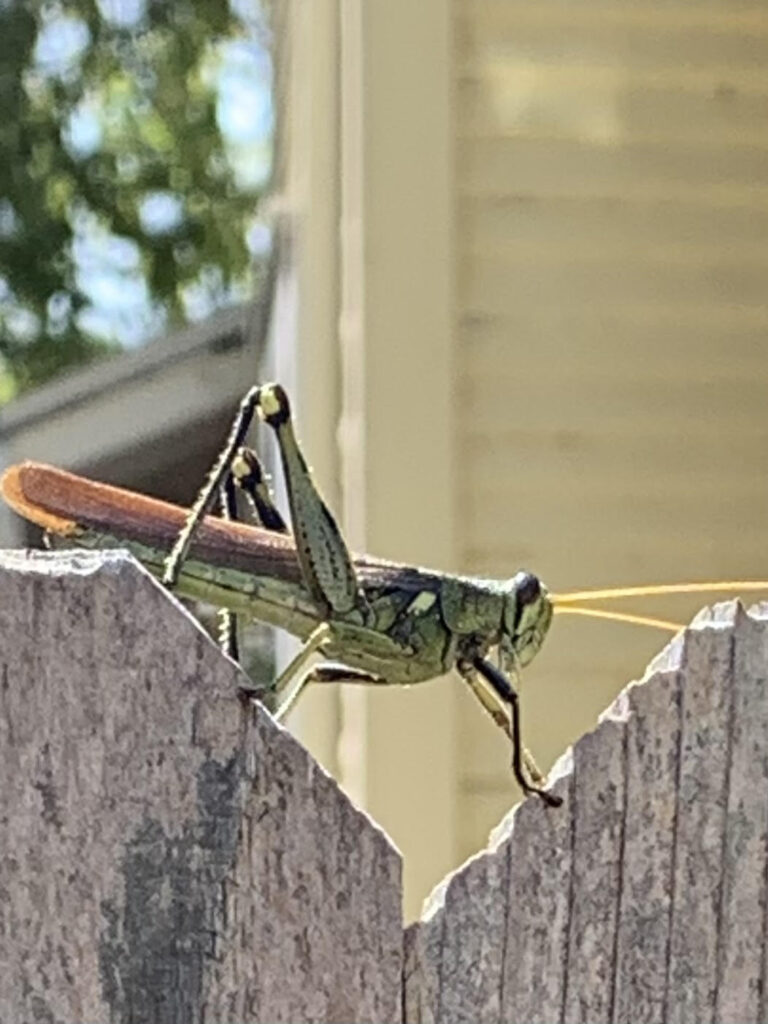
Don’t use insecticides, though. Use other more appropriate methods.
This is also a time to keep a lookout for bugs feasting on stressed plants. Pick off those that you can, and use methods appropriate to the bugs you are seeing. Find out more in Get Rid of Bugs Organically.
Container plants can suffer the worst during the hot months. Because the volume of soil is limited, the heat to the roots can equal the heat to the plant above the soil. Combine that with the tendency to dry out more quickly, and plants are in danger of dying. Be sure to keep your container plants well-watered but remember they can drown, too. Water them well, but don’t overdo it.
Use “Southern” Plants and Native Plants When It’s Hot
This is a time of year when some plants excel. There’s a reason that squash and okra are the iconic southern vegetables. Summer squash is happy in the heat and it may be the best time to beat the squash vine borers. Okra will keep going through the heat providing you with plenty to cook all summer long. This is also a great time for peppers that have some shade. I’ll cover squash, squash vine borers and okra in other posts.
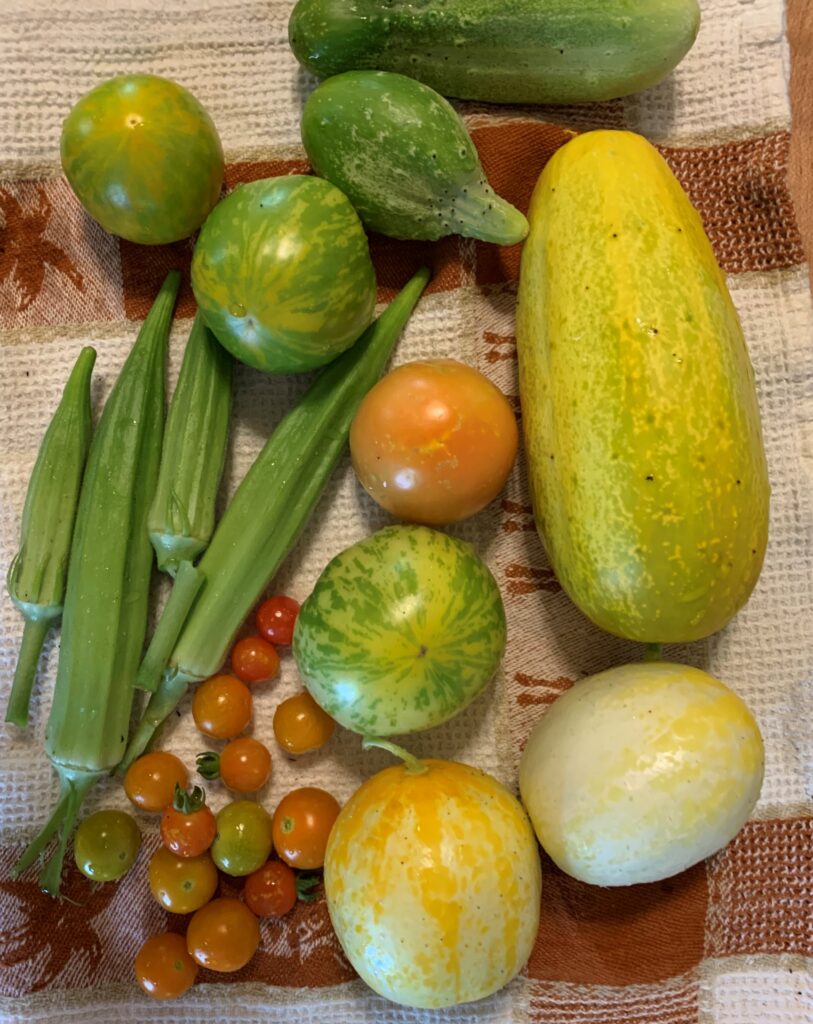
Native plants will come though the hot months most easily. These plants have spent thousands of years adapting to this climate with ways to protect themselves from the heat. Native plants lose moisture from their foliage more slowly and are more efficient feeders from the soil. Try some new sooon-to-be-favorites from Native American Seeds. This is why plants that are not native are so susceptible to dying during the hot months. They do not have the adaptations that protect themselves.
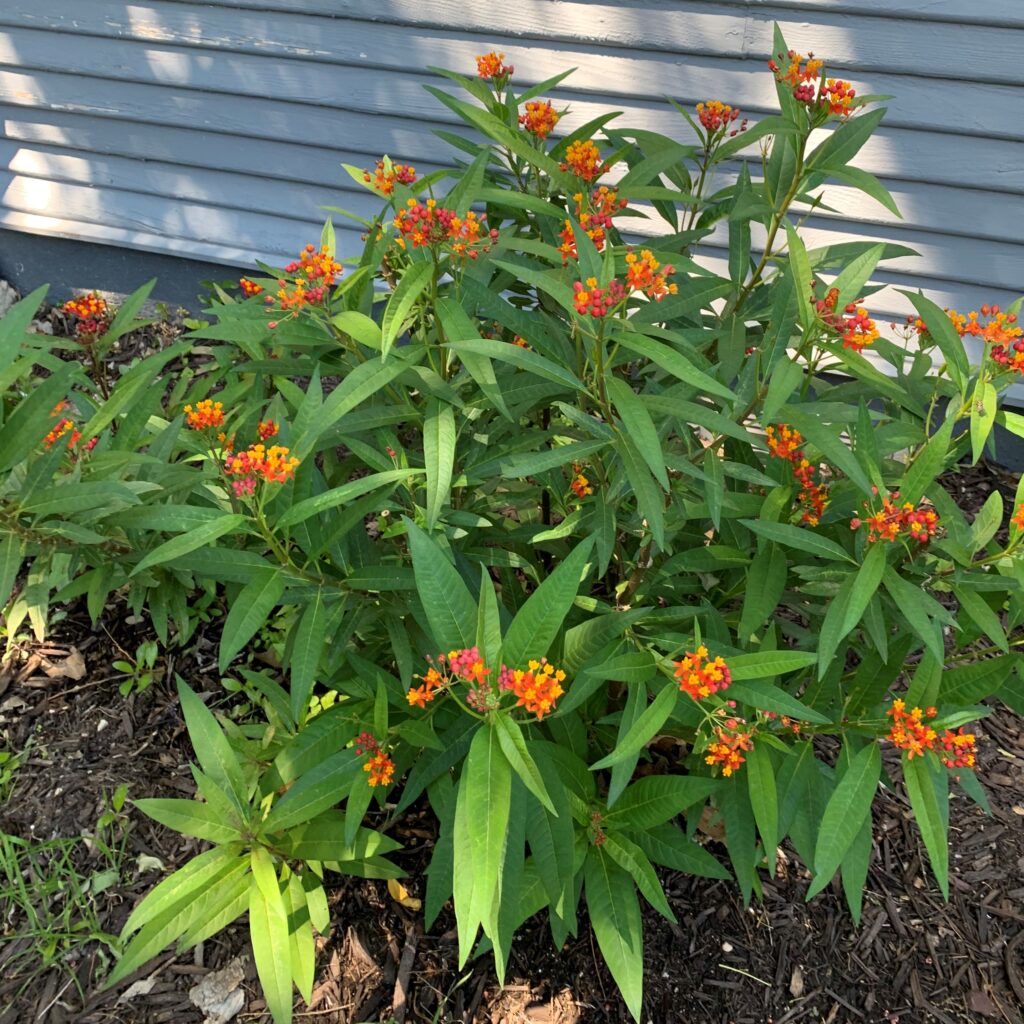
Many flowers such as zinnias and coneflowers thrive in spite of the heat. Be sure you keep dead-heading any flowers to keep them blooming throughout the summer. But don’t go so far as to prune your plants. Let that wait until temperatures cool down.
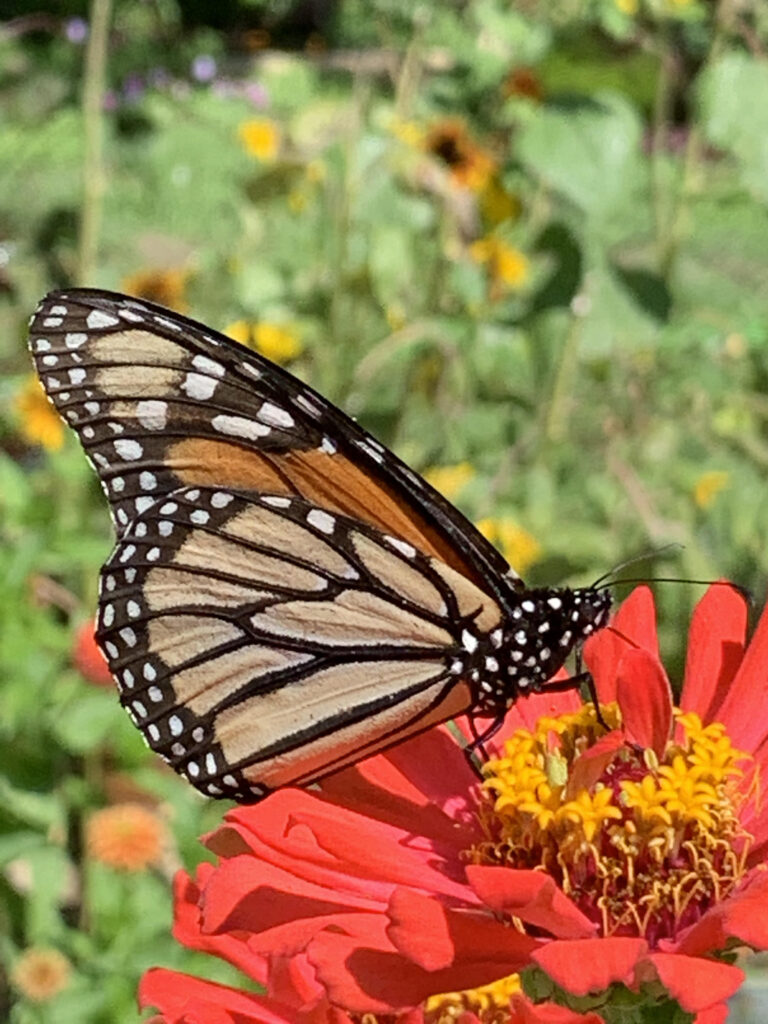
To Garden When It’s Hot, Take It Easy
When it’s hot is not the time to prune, transplant or fertilize. All of these activities stress plants, and the heat is stressing your plants enough.
Fertilizer can only be taken up at optimal temperatures so applying it during the highest heat days is just a waste. Overfertilizing can raise the salinity of the soil which can kill off the microbes in the soil or if the level of salinity is high enough, it can kill your plants.
Remember, the soil is taking care of your plants so you must take care of the soil. High temperatures reduce root growth, and with fewer roots, there is less uptake of fertilizers. High temperatures also bind elements within the soil so that they cannot be taken up.
Garden When It’s Hot and Enjoy Your Summer!
Use the above tips and enjoy your summertime, even if you have to hide from the heat in the afternoons. Gardening when it’s hot is a great time to garden if you plan your garden accordingly.
Those cukes look yummy! Mareena
Thanks!